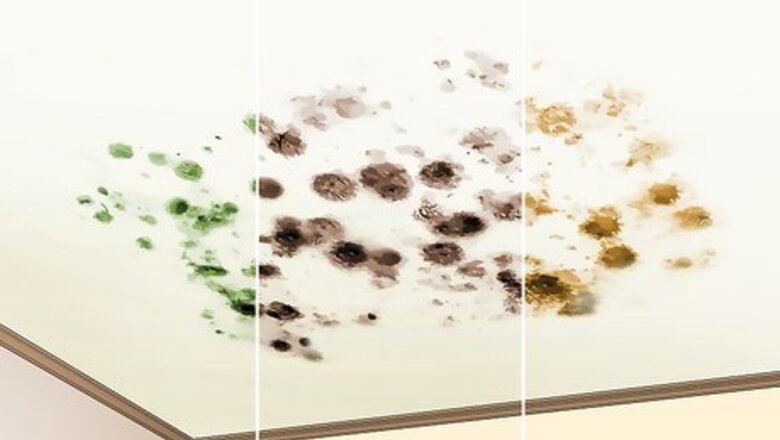
views
- Use white vinegar, bleach, borax, or hydrogen peroxide to make a mold cleaning solution.
- Spray the solution onto the ceiling, then scrub it into the ceiling with a scouring sponge.
- Let the ceiling air dry all the way to avoid any other mold growth.
- Eliminate mold by using a dehumidifier and repairing any leaks in the roof.
Killing Mold
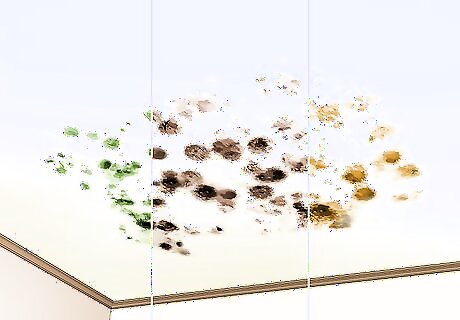
Look for green, brown, or orange mold spots on your ceiling. Usually, you’ll be able to spot mold on your ceiling from far away. Check for other indicators too, like cracked or peeling paint, discoloration, recurrent black streaks, bulging and/or a musty, damp smell. Examine the material used to construct the ceiling, too. If your ceiling is made of a porous material (popcorn ceiling, wood, drywall, etc.), the mold cannot be killed and will likely come back later. You will have to remove the affected portion of the ceiling and replace it. Mold is different from “ghosting,” another phenomenon that can cause discoloration in your ceiling. Ghosting typically follows the pattern of the framing in the attic, and the discoloration is caused by dirt or soot sticking to the ceiling.
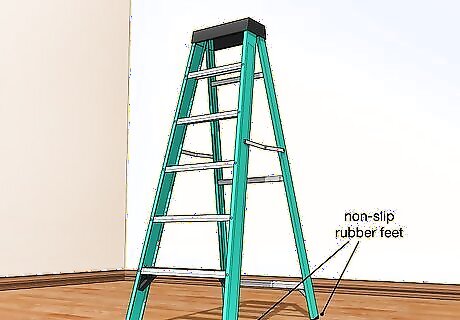
Stand on a footstool or stepladder to reach the mold. As you clean, it’s important to stand on a sturdy surface that won’t slide around. Use something with non-slip or rubber feet, or place your stool on a non-slip mat. If you have really tall ceilings, use a ladder instead.

Wear gloves, a mask, and eye protection. Gloves will protect your hands from the cleaning agent and from the mold. Use a mask and eye protection to keep your lungs and eyes protected from fumes and splashback. Eye protection is extra important when cleaning mold off of the ceiling. Since you’ll be looking up, there’s a chance that cleaning product could drip down onto your face. Put on old clothes that you don’t mind getting a little dirty.
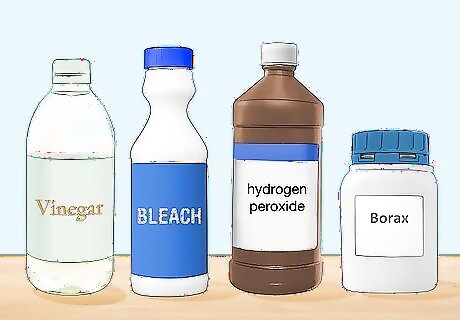
Remove mold with vinegar, bleach, hydrogen peroxide, or borax. There are many natural solutions that you can make to clean mold and clean it up quickly. Choose one of these solutions and mix it in a large bucket to clean your ceiling with: White vinegar: Pour undiluted white vinegar into a spray bottle. White vinegar is a natural cleaner that will sink into the drywall, cleaning mold from the surface and the inside of the wall. Bleach: Fill a bucket with warm water, then add 1 c (240 mL) of bleach for every 1 US gal (3.8 L) of water. Keep in mind that while bleach removes mold from surfaces, it does not fully kill mold inside the drywall. Hydrogen peroxide: Pour undiluted 3% hydrogen peroxide into a spray bottle. Hydrogen peroxide is an antifungal and an antibacterial that kills and removes mold. Borax: Fill a bucket with water. Add 1 cup (240 g) of Borax for every 1 US gal (3.8 L) of water, then mix thoroughly. Borax is a natural cleaning product that does not emit dangerous fumes.
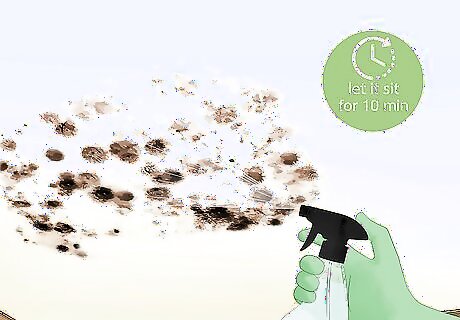
Spray the cleaning solution onto the mold, then let it sit for 10 minutes. Pour your cleaning solution into a spray bottle, then spray a liberal amount of it onto all of the mold that you can see. Let the solution sit for about 10 minutes so it penetrates into the ceiling. As you spray, be careful to watch for drips. Many cleaning solutions can cause skin irritation, so wash your skin off right away if any gets on you.
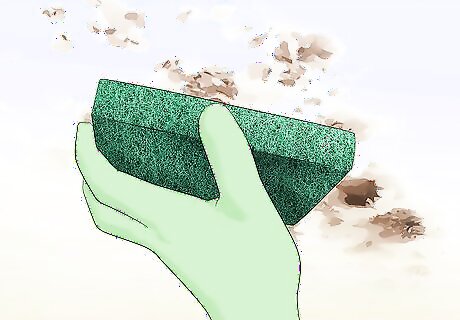
Scrub the mold using the rough side of a scouring sponge. Rub back and forth to shift the mold off. Take breaks as needed, especially if the mold patch is large. You may also need to get down and shift the footstool to reach all parts of the mold growth. As you clean, take regular breaks to rinse the sponge off. If you don’t, there’s a risk that you’ll spread the mold around rather than remove it.

Let the ceiling dry fully. Mold thrives in a wet environment. Open up any windows and point fans at the ceiling to ensure that everything dries all the way. This is especially important for bathroom ceilings. Bathrooms tend to harbor a lot of moisture, which can exacerbate mold.
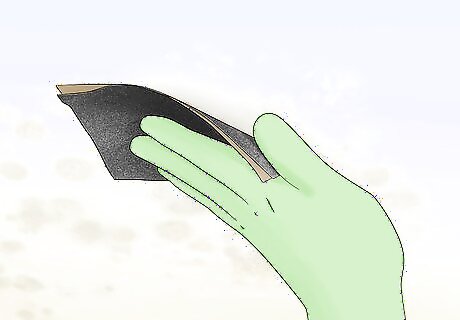
Sand down the ceiling and repaint it with waterproof paint. If your ceiling is discolored or you plan on repainting the ceiling then you should sand down the ceiling. Sand the areas where the mold was covering to remove any lingering traces and provide a good base for the new paint. Waterproof paint is ideal, since it helps stop mold from coming back. Sanding and repainting is a good idea if you want to keep mold away for good. If you’re fine using other preventative measures and cleaning your ceiling regularly, then you don’t need to do these steps. Remove Ceiling Mold Step 8Bullet2.jpg
Eliminating the Source of the Mold
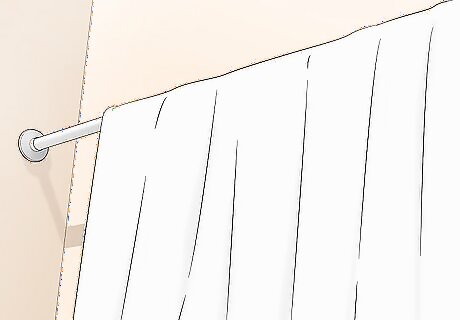
Hang up towels in another room. Wet towels can add humidity to a room. Make sure you hang your towels to allow them to dry thoroughly, preferably in another room. Do this to keep humidity at a minimum, reducing the conditions for mold growth. Avoid drying clothes indoors on racks or over chairs if you have a mold growth problem. Excess moisture from drying clothes can encourage more mold growth.
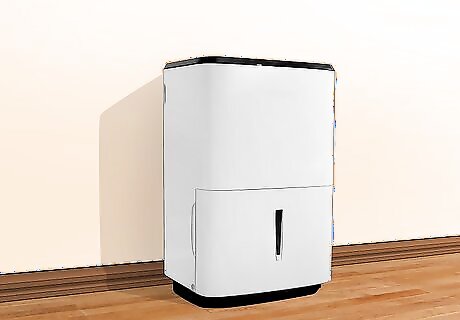
Use a dehumidifier. Mold prefers damp and warm conditions. Dehumidifiers remove the humidity from the air, reducing the ability of mold to grow and thrive. Set up a dehumidifier and keep it on any time there’s moisture in the air, like after a shower. Be sure to clean your dehumidifier regularly to avoid mold and mildew buildup.
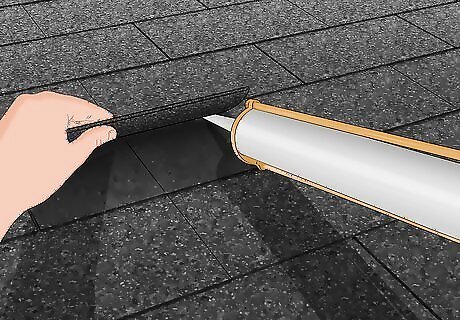
Repair any leaks in the roof. Most ceiling mold comes from water moving through a leaking roof. Head up to the attic or the roof and look for holes where water might get in. Then, call a professional to come patch them up. This may sound like a lot of work, but unless you eliminate the problem, the mold will just keep coming back. Eventually, water damage could eat through your ceiling.
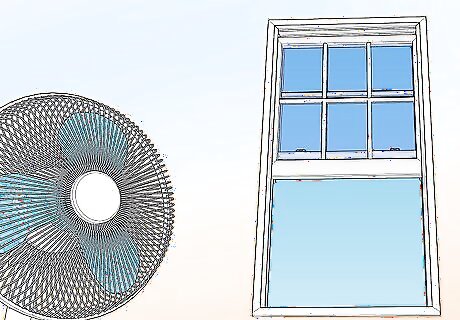
Use fans and windows to ventilate the room. Bathroom and kitchen ceilings often develop mold because of inadequate ventilation. Use fans or extractors in the room to move water out quickly, especially when taking a shower or cooking. Some extractors can be installed by yourself and some will need to be professionally fitted. Speak to a representative at your local hardware supply store to see what kind of extractor will suit your room.
Expose the ceiling to sunlight. Mold prefers to grow in dark conditions. Discourage mold from growing by opening your windows or blinds to let the sunshine in. If there aren't any windows around, add some additional lighting to the area, which will also add heat and reduce the growth of mold.




















Comments
0 comment